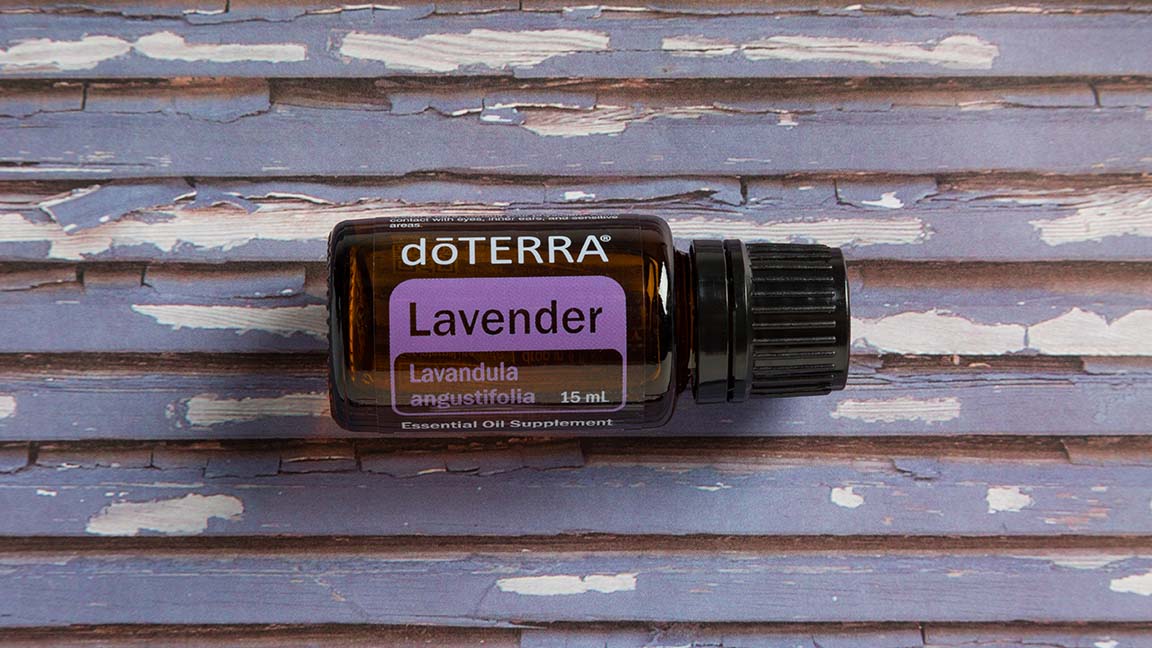Origin: a Latin derivative
meaning "Gift of the Earth."
Lavender Oil Uses and Benefits
Essential Oil Spotlight
Essential Oil Spotlight

Lavender Oil Product Description
With a distinct aroma and countless applications, Lavender has been used for centuries. Anciently, the Romans and Egyptians would use Lavender as perfume and for bathing and cooking. Since that time, many have discovered the myriad benefits that Lavender holds—using Lavender oil topically for skin, internally to ease feelings of tension and promote restful sleep,* and more. The versatile properties of Lavender essential oil make it a doTERRA favorite, and a must-have oil to keep on hand at all times.
- Whether you are trying to soothe skin irritation or merely nourish delicate skin, there are many uses of Lavender essential oil for skin. The soothing properties of Lavender have made it a popular option for skincare products, at-home skincare DIYs, and simple topical application. Do you struggle with obnoxious razor bumps after shaving? Well, shaving might be essential, but irritating razor bumps are not. Provide relief to your skin with this Razor Relief Serum enhanced with Lavender essential oil and avoid the irritation that often comes post-shave. You can also cleanse and nourish your skin by making your own Lavender essential oil clay mask at home. Great for all skin types!
- Do you have a pot of potpourri that has seen its day? Don’t throw it out! You can utilize the amazing aroma of Lavender essential oil by adding a few drops to a potpourri mixture that could use a little revitalization.
- Are your hands constantly plagued with dry skin and unhealthy looking cuticles? Making a homemade cuticle cream with Lavender essential oil is a great way to bring the moisture and healthy look back into your nails. You can also use this cream on your hands, lips, or anywhere you have dry spots. Check out our DIY for homemade cuticle cream, featuring the wonderful soothing abilities of Lavender essential oil.
- One aromatic benefit that Lavender oil is widely known for is its ability to promote a relaxing atmosphere that leads to a restful night’s sleep. The calming properties of the oil help create a serene environment that is optimal for resting well and staying asleep. Wondering how you can use Lavender essential oil aromatically to aid in relaxation for a better night’s sleep? Add a few drops of Lavender to your pillows or bedding so that you inhale the aroma as you are drifting off to sleep. You can also apply Lavender oil to the bottoms of your feet as a part of a relaxing bedtime ritual.
- Sun exposure is good, but too much of it can cause irritated skin. Thankfully, Lavender oil holds many soothing properties that are perfect for calming occasional skin irritations. If you’ve spent a little too much time in the sun and find your skin irritated, reach for a bottle of Lavender essential oil. The next time you are dealing with discomfort from too much sun, try this after-sun soothing spray with Lavender essential oil.
- In addition to its calming aromatic properties, Lavender essential oil can also help ease feelings of tension when used internally.* While internal use of Lavender is often used to promote restful sleep, it can also promote relaxation and feelings of ease during your waking hours.* Whether you diffuse Lavender oil, or take it internally, this oil can be used at the end of a long, taxing day. Its light, floral scent will make you feel at ease and peaceful emotionally. It can also help you relax and drift into a peaceful sleep when taken internally.*
- Whether you have kids, pets, or just a lot going on in your home, unwanted odors can sneak into nearly any room. Thankfully, the fresh, powdery, floral aroma of Lavender essential oil can get rid of musky, pungent smells that might be haunting your home. Combine Lavender oil with water in a spray bottle to create an instant solution for the unwanted smells that might be plaguing your home or belongings. Spray a light mist from your Lavender spray bottle into your car, linen closet, on your mattress, or any other areas that could use some freshening up.
- Yes, Lavender is revered for its calming, soothing, and relaxing properties, but it is also widely used in cooking for its taste and fragrance. You can use Lavender oil when cooking to soften citrus flavors in lemon sauces for chicken or fish, marmalades, citrus salads, and more. Lavender oil will also add a flavorful twist to marinades, baked goods, and desserts. Take a look at this recipe for a Lavender-Blueberry-Banana-Coconut Ice Cream Shake, and see just how delicious Lavender oil can be.
- The ancient Romans and Egyptians often used Lavender oil aromatically for relaxation purposes, and you can too. All your worries will slip away as you sink into a relaxing Lavender oil bath. Add a few drops of Lavender to your bath water or bath soap to reap the benefits of this tranquil, light aroma. You can also apply Lavender to your temples and back of the neck to enjoy its relaxing aroma and help melt away feelings of stress or tension. Whether applied topically, or added to a luxurious bath, Lavender oil is the perfect solution for when you want to unwind at the end of a long day.
Video disabled by your privacy settings
Plant Description
*These statements have not been evaluated by the Food and Drug Administration. This product is not intended to diagnose, treat, cure, or prevent any disease.





